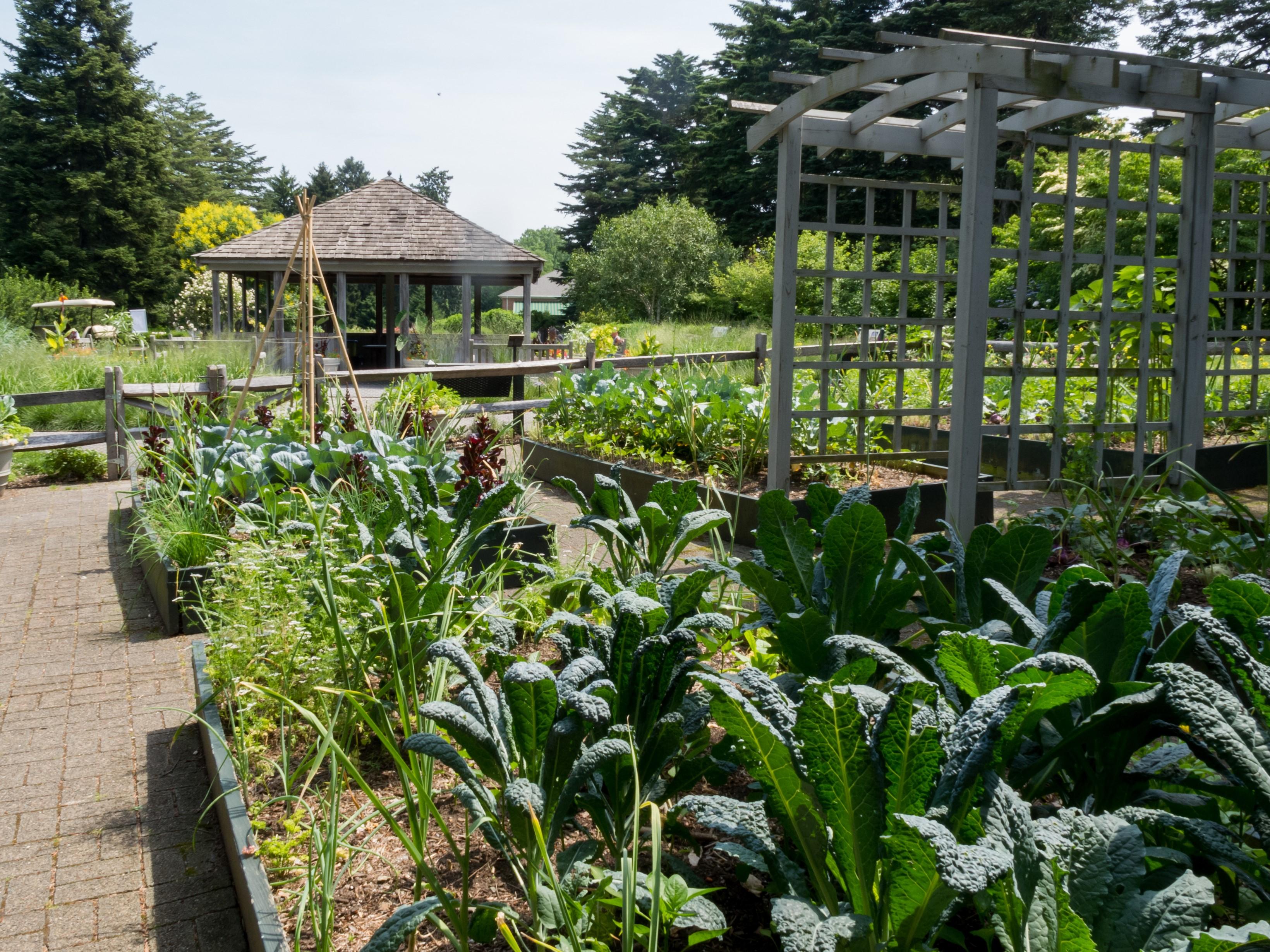Updated: November 7, 2023
Lea esta página en español.
How to build a raised bed vegetable garden
- Raised beds are improved areas of soil elevated above ground level and often surrounded and contained with boards or other rigid materials. They are usually 2- to 4-ft. wide, 2- to 12-in. high, and as long as desired. The raised bed or growing bed is the basic unit of an intensive garden.
- Raised beds are typically bordered by permanent paths. The idea is to stand or kneel in the paths when working in the raised beds. The soil remains more productive because it is not compacted by footsteps.
- There are many suitable enclosure materials for raised beds including stone, bricks, concrete blocks, wood boards (oak, locust, poplar, cedar), and rigid, recycled plastic “boards.” You can also skip the expense and hard work of building an enclosure by creating a raised bed with sloped sides.
- Once you have your raised bed in place fill it with a mixture of compost and garden soil (or purchased topsoil) in a 1:2 or 1:1 ratio. You may be able to find local vendors who sell topsoil mixed with compost. Leaf Gro® is an example of a commercial compost, made from municipal yard waste, that is widely available in Maryland. If using existing garden soil have it tested by sending a sample to a soil testing laboratory. Have the lab test the soil for lead if you plan to grow food in your raised bed.
Advantages of raised beds
- Warms up quickly in spring;
- Drains well;
- Increases available rooting area;
- Less compaction and erosion because you never walk in the planting area; and
- Provides greater yields per unit area due to high fertility and increased root growth.
Disadvantages of raised beds
- Up-front labor and expense;
- Dries out quickly if weather is hot and dry;
- Is relatively permanent;
- You must plan garden around bed dimensions and configuration; and
- Doesn’t work on slopes unless terraced.
